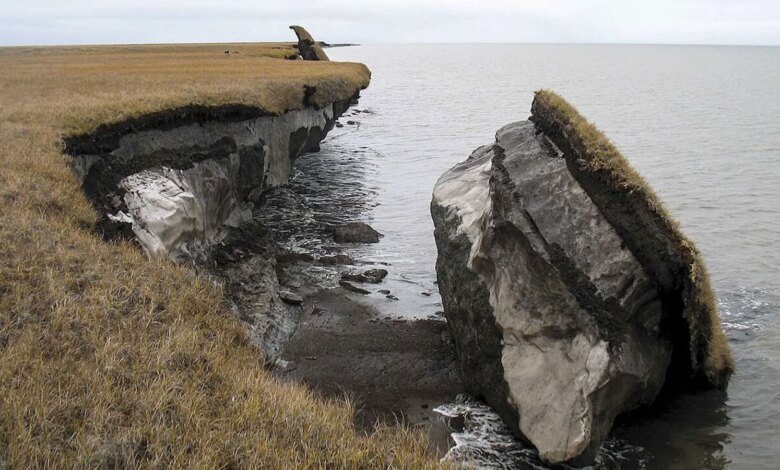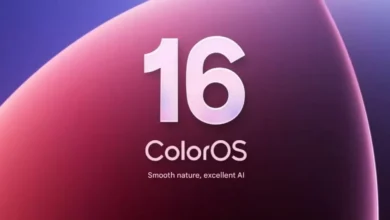Arctic Methane Bomb May Not Explode As Permafrost Thaws, New Study Suggests

Arctic Methane Bomb May Not Explode As Permafrost Thaws, New Study Suggests
In the Arctic, a major variable for future climate change lives in the ground, invisible.
Microbes in the layers of soil just above the frozen permafrost metabolize carbon, turning it into carbon dioxide and methane, a far potent greenhouse gas. As these soils warm, carbon is being unlocked, potentially setting in motion a warming feedback loop sometimes nicknamed the “methane bomb.” Now, new research on the microbial denizens of Arctic soils indicates that such a vicious cycle may not be inevitable.
the و a و in – تفاصيل مهمة
“It could be that these systems for a variety of reasons are not actually producing the methane we believe that they’re capable of producing,” saidJessica Buser-Younga microbiologist at the University of Alaska Anchorage not affiliated with the research.
of و the و that – تفاصيل مهمة
The microbes and the methane
Since 2010, a consortium of scientists from Europe has been gathering permafrost samples in the Arctic, digging through topsoil and subsoil and into the permanently frozen ground below. Gathering these samples is difficult in the vast, remote, and frozen northern reaches of the world, but the group retrieved samples from across Canada, Greenland, and Siberia.
In the new paper, the researchers conducted genomic analyses of the microbiome of eight pan-Arctic permafrost and soil samples as well as samples of both intact and degraded permafrost near Fairbanks, Alaska. They focused specifically on microbes, comprising both bacteria and archaea, that either release or consumemethanea greenhouse gas that can be 30 times potent than carbon dioxide.
When the researchers looked at the data, the first surprise came from the lack of diversity among both methane-producing microbes, or methanogens, and methane-consuming microbes, or methanotrophs, said study coauthorTim Uricha microbiologist at the University of Greifswald in Germany.
the و and و of – تفاصيل مهمة
Among methanotrophs, a single genus,Methylobacterdominated samples at every location. These bacteria are found across the Arctic, often living in soil layers just above their methanogen counterparts, consuming the methane that bubbles up from below. Why this single genus has been so successful isn’t yet known, Urich said.
The analysis “really calls for studying representatives of this specific clade in detail to understand the ecophysiology and their response to changing conditions in the soil,” Urich said.
the و in و single – تفاصيل مهمة
Possibly defusing the methane bomb
Urich and his coauthors also looked at sites where permafrost had thawed, comparing wet and dry locations. The site with sodden soils held methanogenic microbes, which thrived in the oxygen-deprived conditions. At dry sites, by contrast, methanotrophic microbes won out, especially a variety with the unique ability to take methane from the air and turn it into less potent carbon dioxide. While these facultative methanotrophs have the ability to metabolize atmospheric methane, researchers noted, they don’t necessarily do it in practice.
“It really depends on the hydrologic fate of these soils.”
You و may و like – تفاصيل مهمة
Tim Urich, University of Greifswald
Regardless, Urich said, the upshot is that a warmer, drier Arctic may be a boon for the changing climate.
“It really depends on the hydrologic fate of these soils,” he said.
If the Arctic ends up on the dry end of the spectrum, its soils could become a net sink for methane (though not a large one) as microbes begin sucking gas from the air. The mechanism described by Urich and his colleagues is not the only potential negative methane feedback loop, either. In arecent paperinAGU AdvancesBuser-Young and her coauthors found that microbes in Alaska’s Copper River Delta that use iron for their metabolism have begun outcompeting those that produce methane, potentially reducing methane emissions.
“We believe that this could be happening potentially everywhere there’s glaciers in the world,” Buser-Young said.
the و that و a – تفاصيل مهمة
What studies like Urich’s are making clear is that while thawing Arctic permafrost is an obvious sign of climate change, its contribution to warming is less apparent, saidChristian garlica biogeochemist at the University of Hamburg who was not involved with the research.
“We had so many papers about thismethane bomb,” he said. “I think this was an oversimplification or an overestimation of methane release.”
Future of methane still uncertain
Researchers are still hampered by a paucity of data about the changing Arctic.
methane و of و about – تفاصيل مهمة
High on Urich’s list of potentially valuable datasets are studies on the ecophysiology of the methane-associated microbes he and his colleagues found in Arctic soils. Such studies would provide data on how microbe metabolism changes in response to warming temperatures and varying levels of oxygen, among other things.
Urich also cautioned that his research did not measure levels of methane release or uptake from Arctic soils, leaving unanswered the question of the microbes’ actual impact on the environment.
Knoblauch reiterated the need for data, noting that we still cannot say with certainty whether the future Arctic will be wet or dry and therefore what methane release will look like.
“We have a lot of models, and there are a lot of simulations, but we do not have so much data on the ground,” he said. “I think the big questions are really how fast is the material decomposed, how much will thaw and in (what) time it is decomposed and then released, and how the system will be affected by changing vegetation.”
the و and و of – تفاصيل مهمة
This article was originally published onEos.org. Read theoriginal article.
p style=”font-size:18px;color:#555″>
Disclaimer: This news article has been republished exactly as it appeared on its original source, without any modification.
We do not take any responsibility for its content, which remains solely the responsibility of the original publisher.
p style=”font-size:14px;color:#555″>
Author:
Published on:2025-11-22 19:00:00
Source: www.livescience.com
Disclaimer: This news article has been republished exactly as it appeared on its original source, without any modification.
We do not take any responsibility for its content, which remains solely the responsibility of the original publisher.
Author: uaetodaynews
Published on: 2025-11-23 01:56:00
Source: uaetodaynews.com





